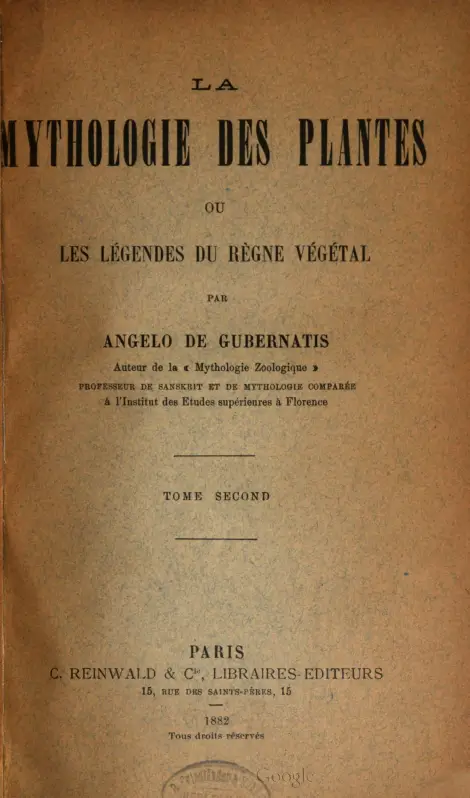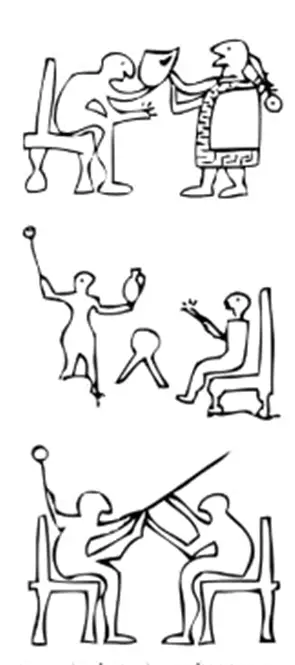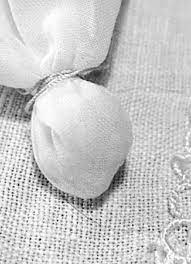Traditionally, since ancient times, the opium poppy has been used as a medicinal remedy, from the Eleusinian Mysteries to the so-called "papagna" of Salento women. Here we retrace its ritual use and the myths connected to it.
di Gianfranco Mele
POPPIES AND EARS
Some scholars, in their work on the meanings and the role of plants in the context of Eleusinian mysteries and demetriac cult, hypothesize a symbolic and ritual centrality to the Papaver somniferum instead excluding the presence and use of Ergot: this is the case, for example, of Kerényi, who, convinced of a "artificially produced transcendence"In Eleusis, refers to theopium as a psychoactive substance taken there, assuming its presence in Eleusinian sweets and / or in cycaeon [1]. The Burkert, which, however, after discarding the hypothesis of Hofmann, takes up Kerény's thesis but with less conviction and many more doubts [2]. With this writing I do not mean to be a supporter of one or the other theory, but to highlight and reiterate through some observations the possibility, in any case, not only of an important role of the Poppy in the cult, in the ritual and, perhaps, in the composition same as kykeon, but also a close correlation on a symbolic level between the presence of the ears and that of the poppy plant.
As is known, those who do not see more esoteric meanings in the recurring presence of the ears (both in the context of iconography linked to Ceres-Demeter, which in the ritual of the Mysteries), tends to consider (according to what is the most widespread interpretation), the effective importance of wheat, crops, cereals in the sphere of the Demetrian cult; those who instead wanted to see other signs in the presence of those ears, and in particular of the ear "shown" solemnly on the occasion of the mystery rituals, sees a meaning linked to the possible presence of the "guest" Ergot. In each of the two cases, the simultaneous, recurring presence of ears and poppies does not seem to refer to further or different connections between the two plants.
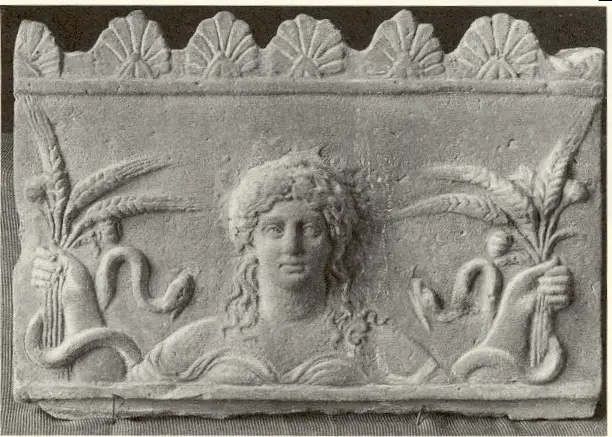
However, the figurative representation of Demeter-Ceres with ears and poppies in her hand can also be read through the close association of the two plants in their habitat: in fact, the poppy often arises right at the edges of wheat crops, or among the spontaneous grasses (or in any case and above all, where heavy plowing or digging is carried out). For example, the De Gubernatis, which links the association of the Poppy plant with Request, Eventus Bonus e ubertas its to its habitual and usual growth inside the wheat fields ( "in the middle of the harvest"Writes the Turin ethnologist, although it is more usual to see him at the edges) [3].
Il Locksmiths he is critical of De Gubernatis and believes that the latter has confused the Papaver somniferum (who would prefer “drier and more arid soils”) with the Papaver rhoeas "Usually visible in wheat fields") [4]. Actually not just the Papaver somniferum can grow in wheat fields (or rather on their edges), but is present in the same habitat and type of soil where the rhoeas, and is often seen sprouting on mounds of earth along with others papaveraceae which precisely the Papaver rhoeas , Fumaria officinalis. It springs from its seeds that are extremely resistant to time, where plowing and drastic turning of the land are carried out (as happens precisely for the borders of a plowed field in preparation for sowing wheat, or where mechanical shovels move and deposit earth in heaps mixed with tuffaceous residues) . The passage of De Gubernatis is the following:
«The Greeks represented Hypnos, sleep, with his head crowned with poppies or with poppies in his hand; likewise they represented Thanatos, death, and Nyx, the night. The sleeping effects of poppy are too well known for such images to need to be explained. It is said that Requestdesperate for the kidnapping of her daughter, to forget her great pain, fell asleep eating poppies. The poppy, which usually grows in the middle of the crop, easily becomes the attribute of the wheat goddess; that's why we see Request, ubertas e Eventus Bonus, crowned with poppies. In a wonderful painting that was part of the Pantheon of Pompeii, we saw a priestess holding poppies and ears of wheat in her hand. The poppies and the spikes merge. Thus, in the fifth book of Herodotus, the ears take the place of Tarquinio's poppies. Trasibulo, cutting off the ears that protrude, makes Periandro understand, with a silent advice, that he must kill the first citizens of Corinth. The ear and the poppy head have been compared to human heads. Not only was a human head seen in the poppy's head, but an entire city, with its crenellated walls. The large quantity of his seeds made an entire population think. "
[5]
Fabbri is so critical of De Gubernatis's statements that he also disputes the fact that the nineteenth-century ethnologist does not report sources confirming the association between Hypnos, Thanatos etc. with the Poppy [6], when instead a series of evidences also of an iconographic type show that in ancient times, in the Greek and Roman areas, this association was recurrent [7]. Similarly, Fabbri denies that De Gubernatis does not provide references with respect to the source according to which Ceres breaks the fast "eat the pavots" [8]. This episode, on the other hand, is clearly reported in the Fasti of Ovid:
«… And the goddess, before entering the humble hut, collects delicate poppies with soporific virtues from the rural soil. It is said that in catching it, she tasted it with forgetful palate, involuntarily breaking her long fast. "
[9]
Moreover, in the Fasti the goddess even cures the little Triptolemus with the Poppy:
«… .But the holy Ceres does not eat, and gives you, as a child, an infusion of poppies that cause sleep, to drink with warm milk. "
[10]
To return to the association between poppy and ears of wheat, another element is in the fact that the poppy ripens parallel to the grain. The same meaning attributed to the name Triptolemus [11] (Τριπτόλεμος) as deriving from "τρίπολος" ("he who plows three times") could have a relationship not only and simply with the art of agriculture (gift of the Goddess to the child and to humanity through the child himself) but also with appearance and growth, once again, of the poppy, whose ideal conditions are precisely the drastic and repeated turning of the earth which hosts its seeds.
RIGHT: Stele daune, scenes of therapeutic intervention from the research of ML Leone
A SALENTINE KYKEON
In a recent documentary by Christian Manno, a Salento woman "on the day of Corpus Domini" (which falls between the very last days of May and mid-June, depending on the year) severs and collects the capsules of "Papagna" together with the stems, for the preparation of a very elaborate decoction in which there are various ingredients (we will see them below) [12]. The woman says: "...the day of Corpus Domini, the Lord passes and blesses everything, then you can collect any type of grass".
The name "Papagna" (in some dialectal variants pronounced "papania", "papannia"), probably originally referred to decoction, is indifferently used in Salento to designate both the preparato a basis of Papaver somniferum is the plant itself. The etymology, probably and according to the studies of the Carpitelli, is to be found in the compound between the Latin suffix aneus [13] and the base-name "dad"-"pope" [14].
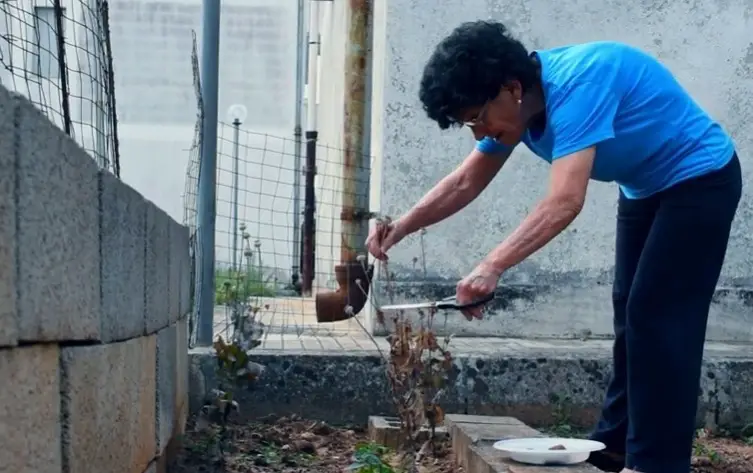
Returning to Christian Manno's documentary, the woman, in the scenes shot, prepares her own "jacottu" (decoction) by mixing in water: capsule and stems of Papaver somniferum, chamomile, fennel, lemon, bay leaf, orange and lemon peel, dried figs and adding generous amounts of honey at the end of cooking. To all intents and purposes, therefore, a composite drink, the result of mixing various ingredients (which indeed is, even in its literal meaning, the κυκεών). The documentary is very interesting because it also explains the difference between the opioid preparation used as "medicine" by adults, and that administered to children: in fact, in relation to these different types of users, dosages and preparations change drastically. While for adults they are used copious amounts of capsules and stems mixed in a single solution with the above ingredients, what is given to babies to soothe them or give them sleep is a freshly soaked breadcrumbs in Papaver-based decoction. The crumb was modeled in the hands in the shape of a small ball and wrapped in a linen cloth, after which it was dipped in the decoction. The shape it took was that of a pacifier, which the Salento women called "pupieddu".
RIGHT: Scene from the documentary "Papagna"
FROM THE PRIESTESSES OF DEMETRA TO THE SALENTINE WOMEN
The opium poppy is of fundamental importance in the Demetrian tradition and its related mysteries (also inherited in the tradition of ancient Rome). Equally, in the Daunian civilization (which flourished in northern Puglia from the XNUMXth to the XNUMXth century BC) there are important traces of a tradition centered on the use of the opium poppy, managed by priestesses-healers:
«The Dauni certainly knew and valued every property of the drug, whose dependence had to be wisely manipulated by the priestly caste, recognizable in the female steles who exploited their monopoly and management to their advantage. And perhaps not only in an esoteric and religious sense but also in a political and economic sense, since social categories and specialization of roles are identified in the scenes. Thus the kimbala-poppies, together with the cassock and other elements, represent the status-symbol of the caste to which the monuments that perhaps portrayed a patron deity or the high priestess of the hierocratic system were devoted. "
[15]
In ancient myths, therefore, the poppy is omnipresent, and is associated with inherent stories and representations both the healings and the sacred-ritual area. The "management" of the drug takes place at the hands of priestesses, the poppy is an attribute of the goddess herself, and takes on multiple meanings related to the divinity and her cult; moreover, it is both a tool thaumaturgical is divinatory.
Demeter inherits attributes of the oldest Mother Goddess and other female deities. She is, among other things, protector and healer of children and young people. Connoisseur of remedies and spells against evil, she heals both through her "magical" skills and through the use of poppy. In the myth told by Ovid, the goddess, as we have already seen, heals the sick Triptolemus (the baby son of the king of Eleusis of which he becomes a nurse) giving him the opium poppy, which she herself ritually ate by breaking her sacred fast.
The poppy in the demetriac myth is an instrument-remedy for insomnia and pain [16], and often the capsules are offered by faithful to Demeter as votive for healing itself. The poppy is therefore related to the appearance of Demeter like deity of health and healing, and Demeter with Asclepius, god of medicine, not only "contends" for this role, but also shares the serpentine attributes [17], feasts, and inscriptions in which it is explicitly mentioned together with Asclepius as salutary deity [18]. Opium was also used in the Asclepian temples as a drug to support the practice ofincubation.
Scholars of the demetriac myth point out that Demeter's opium poppy is to be read as a symbol of health due to the therapeutic properties of the capsule. [19]. in Orphic hymns Demeter is specifically cited as a health giver, and her two attributes combined, the ear and the poppy capsule, according to some interpretations indicate the goddess as the protector of life (symbolized by wheat) and of the health (symbolized by the poppy capsule) [20]. In this context, therefore, and certainly, opium is sacred and used as medicine, sacred to a goddess and run by her priestesses. This sacral characterization and this use for medical purposes, have ensured that there were no improper uses and phenomena of abuse.
The Roman equivalent of Demeter, Request, is also associated with the cult of the opium poppy, also characteristic of the various divinities connected to Demeter-Ceres. The cult of Tellus (Roman goddess of the Earth and protector of fertility, of the dead and against earthquakes) is one of the oldest of the official Roman religion and is linked to that of Great Mother. Tellus is Associated and often merged with Ceres. This deity is also depicted as healer deity, associated with the poppy, and nurse of children.
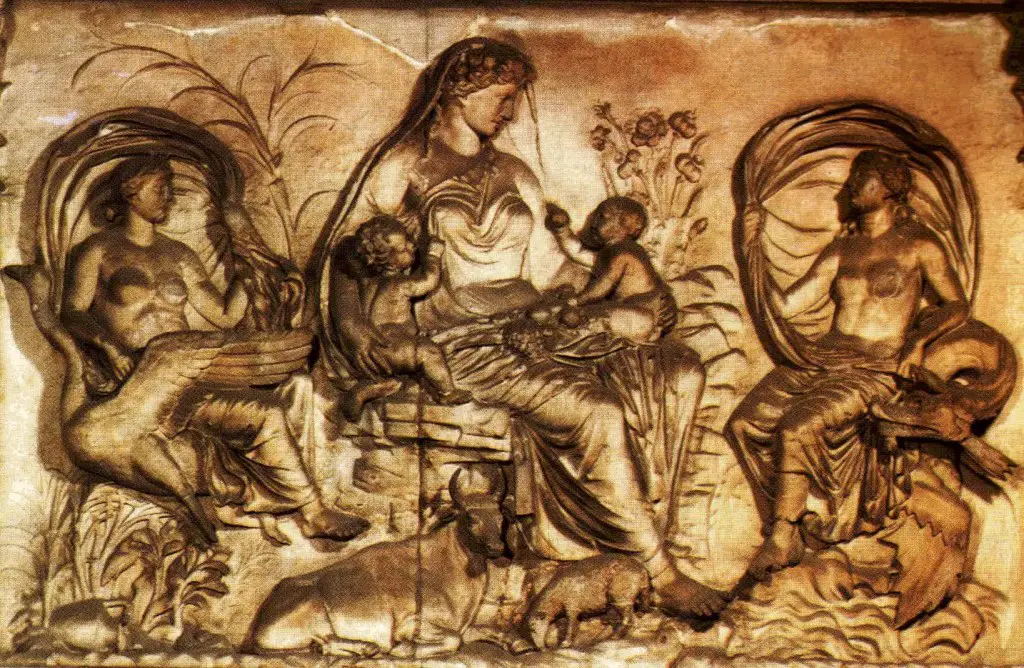
Despite the wide spread and popularity of opium in antiquity, it is wide use for female hand, this substance was never used for voluptuous purposes nor did it create phenomena of abuse. The ancient Romans took decoctions of opium, prepared by women, for various problems: headache, dysmenorrhea, toothache, joint pain, etc. It was a popular medicine and very widely used, yet in Latin there is no word to indicate the opposite addict, for the simple fact that this drug was not characterized as a substance of abuse.
The therapeutic use of opium, managed by women, is handed down in Italy in the peasant world until beyond the first half of the twentieth century, with the tradition of the so-called "papaya”, Used to make children sleep (or to cure them of colic and other pains), but also to treat or soothe the pains of adults. "We were eight children ... the family was large ... my mother, if she thought of one, the other cried, and the other ...", says a woman interviewed by C. Manno to explain and justify the use of the papaya. Another of the women interviewed highlights how the use of the opiate remedy was also aimed at appeasing hunger and poverty: ".. either out of hunger, or because they had nothing ... in short, the children were crying: then, they gave them this "papagna", the so-called "papauru" ... and they fell asleep!"
The recourse to this popular remedy retains some traces of sacredness, when its collection is carried out, as a solemn, renewed ritual, "on the day of Corpus Domini" as explained by the woman who in the documentary takes the capsules and then prepares the decoction. It is also curious that until the first half of the 900th century they were marketed in Italian pharmacies opium-based tablets bearing the name and image of the Madonna, as in a sort of continuum (and renewal and "Christianization") of that ancient tradition which attributed to a female divinity skills and identification around the poppy plant.

POPULAR DRUG BUT NOT ABUSE
As is well known, recent archaeobotanical discoveries have revealed that Italy is the country in which traces of the most ancient stations of Papaver somniferum, present once in a spontaneous or spontaneous state [21] in almost the whole peninsula. Where it did not grow spontaneously, it was cultivated and easily cultivated. It was therefore a very widespread drug and extremely close at hand. Yet it did not constitute a social and abuse problem until the mid-twentieth century.
Why in Greek and Roman antiquity, despite a very wide use, did opium not give rise to phenomena of abuse? There are two basic reasons. The first is its characteristic as an instrument, in those days, essentially medicinal, as well as his sacredness as a symbolic and ritual plant, entrusted to female management and skills. The other, the fact that these companies had built, as Nencini states, "A very sophisticated exploitation of the gratifying properties of wine" [22].
In the second half of the nineteenth century, opiate addiction in Europe and North America expanded strongly, but had a predominantly iatrogenic etiology in this period, and it seems to affect women more than men. This is true for both opium and morphine addictions. There is a strong use of these substances by women, at least until prohibitionist laws of the first half of the twentieth century, which reversed the trend by assigning primacy to the male population (perhaps because women, for a series of factors, tend less both to transgress than to take drugs for purely discretionary purposes). Until then, in fact, not only are these substances not subject to prohibitions or stigma, but they are commonly used both under medical prescription and for self-medication purposes.
Medical sources of the time and historians believe that there was a prevalence of female consumption of opium and morphine, due to the fact that these were substances widely used and prescribed especially for treatments of some typically female disorders (menstruation, genital disorders) [23]. In short, it was the same doctors who promoted the use of these drugs for medicinal purposes and helped to create one dependent population. However, within the peasant class the management of opium-based preparations continued (in Puglia until the early 80s) to be autonomous (with respect to medical prescriptions), of an "artisanal" type and in the form of collection ( from the fields where the poppy appeared at the spontaneous state) you hate self.

Note:
[1] Karl Kerenyi, Dionysus. Archetype of indestructible life, Adelphi, Milan, 1992, p. 43
[2] The positions of Burkert and Kerényii are summarized, and partly shared, in the text by Paolo Nencini, Il flower of the underworld. Opium poppy and ancient world, Muzzio Editore, Rome, 2004, pp. 152-159
[3] Angelo De Gubernatis, The mythologie des plants or les légendes du règne végétal, Paris, Reinwald & C., 1882, p. 283-284
[4] Lorenzo Fabbri, Angelo De Gubernatis pioneer of plant mythology studies in Italy. Critical examination of the Mythologie des plantes, in: Studies and Materials of the History of Religions, 84/1 (2018), Department of History, Culture, Religions, Univ. Sapienza, Rome, Morcelliana Ed., Pag. 314
[5] Angelo De Gubernatis, op. cit., pp. 283-284
[6] Lorenzo Fabbri, op. cit. page 313
[7] See Nicoletta Poli, Regarding the papaver somniferum depicted on two funerary monuments from Aquileia, in: Bruno Callegher (edited by), “Studia archaeologica Monica Verzár Bass dicata”, EUT Edizioni University of Trieste, 2015 (West & East Monographs, 1) pp. 147-153
[8] Textually, in the French work of De Gubernatis
[9] Ovid, Glories, Book IV, vv. 531-534
[10] Ibid, vv. 547-548
[11] The Roman god Bonus Eventus of which De Gubernatis speaks, is often associated with Triptolemus, and represents good luck, agriculture, good harvest, fertility. Attributes of him are poppies and wheat.
[12] Christian Manno, Papagna (documentary) https://www.youtube.com/watch?v=bDu19YrPBb0
[13] Elizabeth Carpitelli, "Poppies and ducks" The designations of the poppy in some central and southern Italo-Romance dialects: structures and motivations, in “Rudiae, Research on the classical world, Studies in memory of Ciro santoro, 15, 2003, Congedo Editore, pag. 40
[14] For further information on this aspect: Gianfranco Mele, Papaver somniferum and the "papagna": magical and medicinal uses, and related rituals from antiquity to 1900. From the myth of Demeter to the healers of the Apulian peasant world, https://www.academia.edu/15228124/Il_Papaver_somniferum_e_la_papagna_usi_magici_e_medicamentosi_e_rituali_correlati_dallantichit%C3%A0_al_1900_Dal_mito_di_Demetra_alle_guaritrici_del_mondo_contadino_pugliese. However, it should not be overlooked that there is a Greek word very similar to "papagna" or "papania", Πόπανον, Πόπανα which refers to ceremonial and votive loaves (cakes, buns) offered to the divinities, generally round and with a "knot "Or" button "in the center. These focaccias were characteristic of the sanctuary of Demeter and Kore in Corinth, but also of the demetrian sanctuary of Monte Papalucio in Oria (BR): cf. Milena Primavera, Breads, focaccias and taralli: the most ancient archaeological evidences in ancient Salento, in L'Idomeneo, n. 20, Department of Cultural Heritage of the University of Salento, 2016, p. 50. In ancient times, bread was prepared by mixing cereal flour and water, with the addition of ingredients such as salt, milk, poppy seeds, dried figs and various aromas, and the Latin equivalent of "baby food" or "cooked bread. in water for children ”is“ papa ”,“ pappa ”,“ papparium ”.
[15] Mary Laura Leone, Opium: Papaver somniferum - the plant sacred to the Dauni of the stelae, Bulletin Camuno Prehistoric Studies Vol. 28: pp. 57-68 - 1995
[16] See magazine Hellenism, XXXI "The poppies of Eleusis ..." https://www.academia.edu/11521531/Rivista_Hellenismo_-_Trentunesimo_numero
[17] The snake often appears next to Demeter: a chthonic symbol, and subsequently an attribute of Asclepius connected to healing
[18] Magazine Hellenism, XXXI, cit.
[19] PG Kritikos, SG Papadaki, The history of the poppy and of opium and their expansion in antiquity in the eastern Mediterranean area - Bulletin of narcotics, UNODC, 2001 https://www.unodc.org/unodc/en/data-and-analysis/bulletin/bulletin_1967-01-01_4_page003.html
[20] Ibidem
[21] I will not enter here on the merits of the debate that still sees on the one hand the supporters of the derivation of Papaver somniferum from the setigerum for domestication, and on the other those who highlight the chromosomal differences between the two varieties.
[22] Paul Nencini, Substance Abuse and Gender Differences Throughout History, in MDD Addiction Medicine, Italian Journal of the Addiction, SITD, n. 16, 2014
[23] Ibidem

